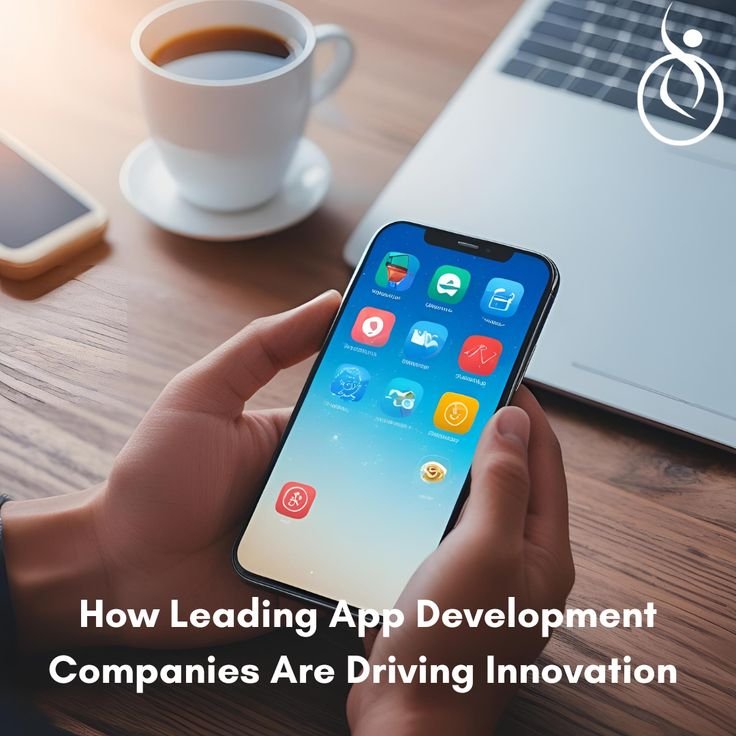Best Mobile App Development Trends 2025: What’s New in Tech
The landscape of mobile app development continues to shift as innovation and user expectations evolve. From cutting-edge technologies to dynamic user interfaces, 2025 promises groundbreaking applications that redefine how we interact with mobile devices. If you’re a developer, enterprise, or tech enthusiast, staying informed is critical to staying competitive. Explore the Best Mobile App Development Trends 2025: What’s New in Tech to understand the emerging innovations shaping the future of apps.
1. Rise of AI-Powered Mobile Apps
Artificial Intelligence (AI) is driving a massive transformation in mobile application development. From chatbots enhancing customer support to personalized recommendations, AI has become an integral part of user experiences.
- What’s New in 2025:
-
- Generative AI tools like ChatGPT are now being integrated into mobile apps to improve interaction. These tools provide natural conversations, making apps more engaging.
- Predictive algorithms are being used to anticipate user behavior, enabling smarter app functionality.
AI isn’t just making apps more intelligent; it’s also streamlining development itself by automating coding tasks and testing processes.
2. 5G Connectivity Expands Capabilities
The global proliferation of 5G technology has opened doors to applications that rely on ultra-fast internet speeds and low latency. Developers are leveraging 5G to create real-time experiences that were previously impossible.
- Key Applications in 2025:
-
- AR-based navigation apps delivering seamless, real-time guidance.
- Cloud gaming apps that allow users to stream console-quality games without downloads.
- Enhanced video conferencing apps with crystal-clear video quality and zero lag.
With 5G rolling out in more regions, it’s becoming a pivotal enabler for high-performance mobile applications.
3. Growth of Progressive Web Apps (PWAs)
Progressive Web Apps combine the best of web and mobile experiences, offering an alternative to native apps. They are light, functional, and accessible through any browser, making them increasingly popular among developers and businesses.
- Advantages of PWAs:
-
- No download required, reducing storage concerns for end-users.
- Ability to work offline using cached data.
- Seamless updates delivered automatically via the web.
With tools for creating PWAs becoming more advanced in 2025, these apps are bridging gaps in user experience while reducing development costs.
4. The Dominance of Cloud-Based Mobile Apps
Cloud computing has revolutionized mobile app development, providing scalable solutions for data storage and processing. Cloud-based mobile apps allow for seamless integration and a persistent, secure connection to data.
- New Capabilities in 2025:
-
- Apps now handle massive datasets in real-time, thanks to improved cloud infrastructure.
- Cloud technology supports cross-platform compatibility, ensuring dynamic, synchronized experiences across devices.
Integration with cloud solutions also ensures higher data security, a crucial factor for user trust.
5. Augmented and Virtual Reality Integration
Immersive technology continues to captivate developers and users alike. Augmented Reality (AR) and Virtual Reality (VR) are now influencing industries far beyond gaming, including retail, real estate, and education.
- How AR & VR Are Being Used Today:
-
- Retail apps offer virtual try-on features for clothing, makeup, or furniture.
- Real estate platforms provide virtual tours of properties, accessible from anywhere.
- Educational apps create interactive experiences, making learning both fun and impactful.
This trend, amplified by devices like AR glasses, is destined to become even more integral in mobile apps.
6. Voice-Activated Apps Gain Momentum
Voice assistants are no longer confined to smart speakers—they’re increasingly present in mobile applications. Voice activation provides users with a hands-free experience for accessibility and convenience.
- Emerging Applications in 2025:
-
- Language-learning apps incorporating voice-enabled conversational features.
- Shopping apps allowing users to browse and purchase items via voice commands.
- Navigation apps with improved voice interactions for safer, easier driving.
Thanks to advancements in Natural Language Processing (NLP), voice-activated apps now offer smoother, more intuitive interactions.
7. Focus on App Security
With cyber threats growing in complexity, app security has become a top priority in development. Users demand privacy and assurance that their data is secure.
- Security Features Trending in 2025:
-
- Biometric authentication, such as fingerprint and facial recognition, is becoming standard.
- Encrypted communication channels protect sensitive data during transactions or messaging.
- Zero-trust frameworks are now applied to mobile apps to eliminate potential breaches.
Developers who prioritize robust security measures are more likely to gain user trust and mitigate risks.
8. Wearable Apps Take Center Stage
Wearable devices are becoming increasingly popular, with innovations extending their functionality beyond fitness tracking. Mobile apps are now being designed specifically for wearables like smartwatches, fitness bands, and even smart glasses.
- Wearable Trends for Developers in 2025:
-
- Health apps now monitor conditions like sleep apnea and cardiovascular health in real-time.
- Productivity apps catered to professionals, integrating with wearable displays and project updates.
- Apps that synchronize wearables with IoT home devices for smarter living environments.
These apps ensure convenience and provide unique value, tailored to the growing demand for wearable tech.
9. Personalization Through Big Data
Personalization has become a deal-breaker for user engagement. Big Data analytics allows developers to collect large volumes of user information to fine-tune app experiences.
- What’s Evolving:
-
- Context-aware apps that adjust content based on time, location, or user activity.
- Enhanced recommendation engines for eCommerce apps, based on deep data aggregation.
- On-demand services like ride-sharing apps making predictive adjustments to optimize wait times.
Leveraging big data effectively can transform good apps into exceptional ones, fostering deeper user loyalty.
10. Green App Development Goes Mainstream
Sustainability is no longer a buzzword—it’s a necessity. Tech companies are making environmentally conscious choices in app development to appeal to eco-minded audiences.
- Eco-Friendly Development Practices in 2025:
-
- Minimizing app energy consumption to reduce strain on mobile batteries.
- Promoting digital solutions that replace paper processes, such as apps for e-signatures and virtual receipts.
- Highlighting carbon-saving features as a unique selling point.
Green development practices not only resonate with users but also contribute to a healthier planet.
Wrapping Up
The Best Mobile App Development Trends 2025: What’s New in Tech showcase how innovation continues to redefine the app landscape. From AI-powered functionality to voice-activated convenience and immersive AR experiences, developers are exploring new possibilities to enhance usability and engagement. Staying informed about these trends will help businesses and creators design applications that meet the changing needs of modern users.
The future of mobile applications is bright, filled with opportunities for developers who seek to innovate, prioritize user experience, and adopt cutting-edge technology. Now is the time to align your strategies with these trends and build apps that leave lasting impressions.











